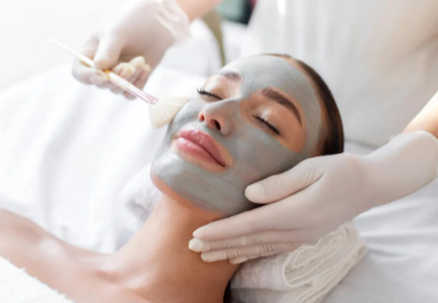The Difference Between At-Home Skincare and Professional Treatments

Maintaining healthy, glowing skin requires a combination of consistent care, proper products, and sometimes professional intervention. While the skincare aisle is filled with an endless variety of creams, serums, and masks designed for home use, professional treatments offer a level of precision and effectiveness that at-home routines cannot always match. Understanding the differences between these two approaches can help you make informed choices for your skin.
At-Home Skincare: Convenience and Consistency
At-home skincare routines are the foundation of daily skin health. These routines typically involve cleansing, moisturizing, applying sunscreen, and occasionally using targeted treatments like serums or exfoliants. One of the main advantages of at-home skincare is convenience. You can tailor your routine to your skin type and address minor concerns like dryness, occasional breakouts, or early signs of aging without leaving your home.
However, the effectiveness of at-home skincare is limited by product formulations and penetration depth. Most over-the-counter products are designed to be safe for general use, which means they often contain lower concentrations of active ingredients. While consistent use can improve skin texture and hydration, severe concerns such as deep wrinkles, significant hyperpigmentation, or advanced acne scarring may not respond adequately to at-home solutions alone.
Professional Treatments: Precision and Results
Professional skincare treatments, offered by licensed aestheticians or dermatologists, provide advanced solutions that go beyond what can be achieved at home. Services such as chemical peels, microdermabrasion, laser treatments, and microneedling are designed to penetrate deeper layers of the skin, targeting specific issues more effectively. These procedures use higher concentrations of active ingredients or specialized equipment, which means results are often faster and more noticeable.
In addition to enhanced efficacy, professional treatments come with personalized assessment and monitoring. A trained professional can identify underlying skin conditions, adjust treatment intensity based on your skin’s needs, and recommend a tailored follow-up regimen. This reduces the risk of adverse reactions and ensures that your skin receives the most suitable care for long-term improvement.
Complementary Approaches
It is important to recognize that at-home skincare and professional treatments are not mutually exclusive. In fact, they work best when used together. A consistent at-home routine can maintain and prolong the results of professional treatments, while periodic professional interventions can address concerns that at-home products cannot fully resolve. For example, after a professional chemical peel, a dermatologist may recommend specific serums or moisturizers to maximize healing and results.
For those looking to combine convenience with expert care, local clinics such as dermani Medspa offer a variety of professional treatments alongside guidance for at-home maintenance. Access to both options ensures that your skin receives comprehensive care tailored to your individual needs.
Read Also: Revolvertech .Com: Revolvertech.Com: the Future of Digital Technology
Closing Remarks
Ultimately, the choice between at-home skincare and professional treatments depends on your skin goals, budget, and the severity of your concerns. While daily routines support overall skin health, professional treatments provide targeted solutions for more significant issues. By understanding the differences and combining both approaches when appropriate, you can achieve optimal skin health, radiance, and long-term results.





